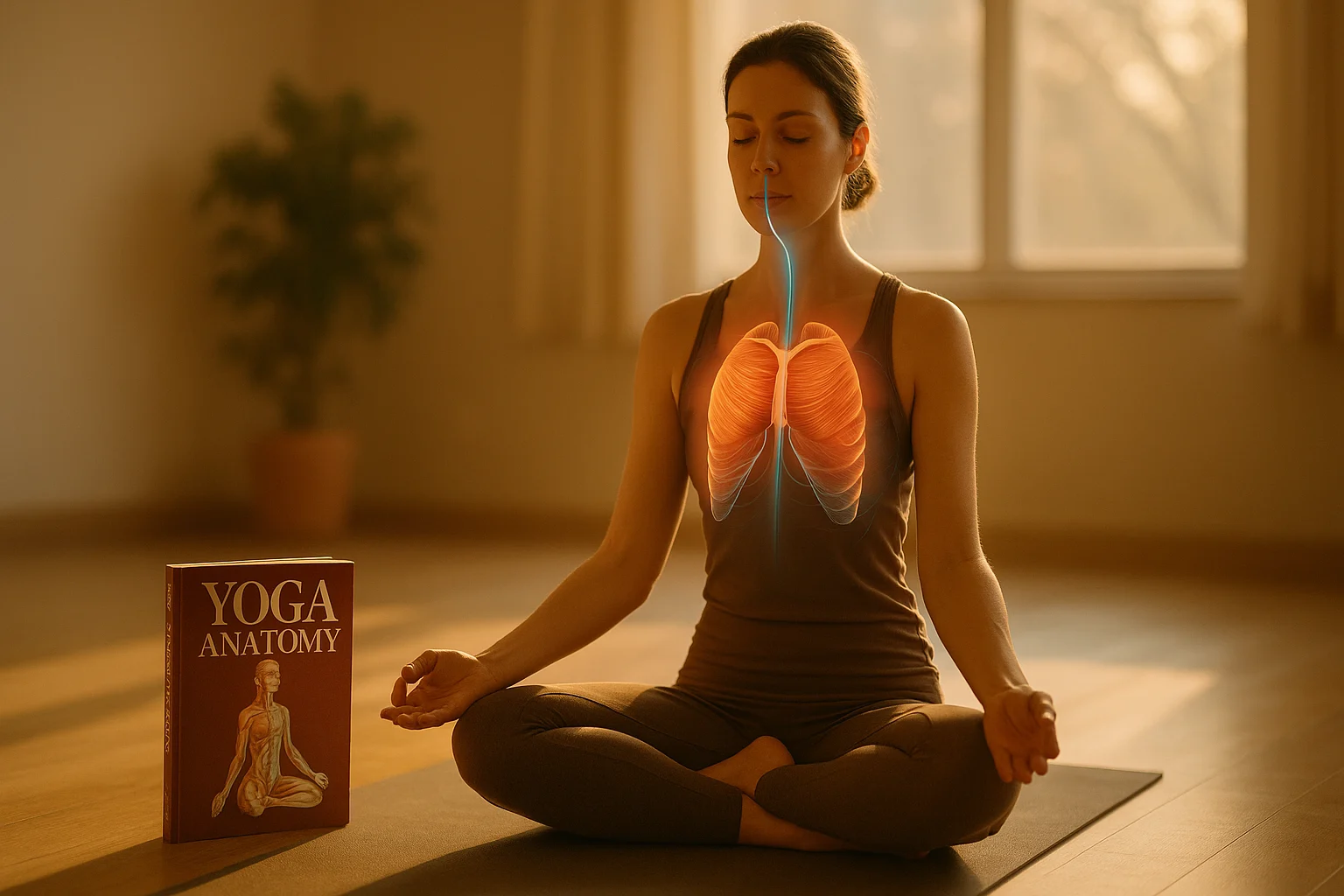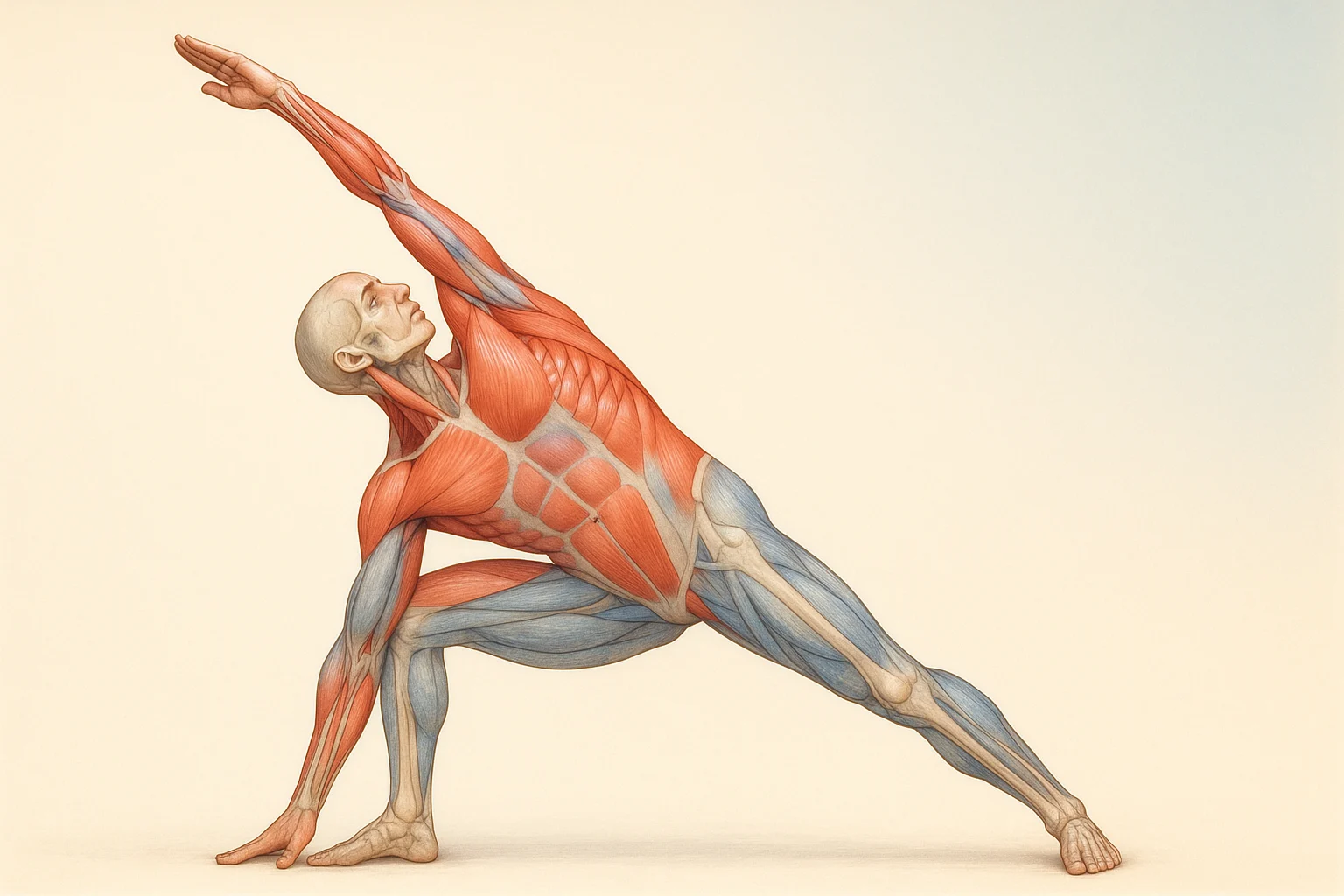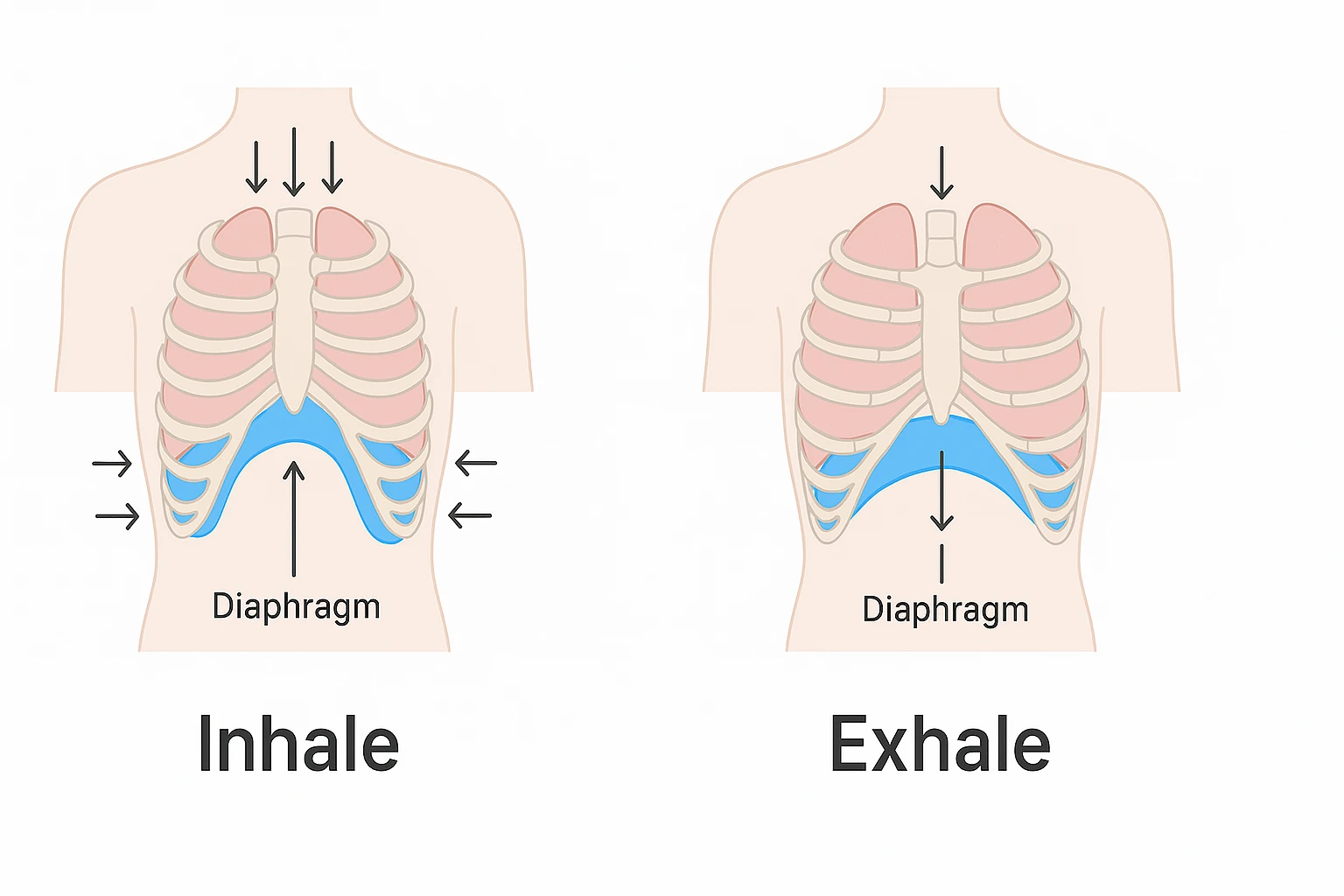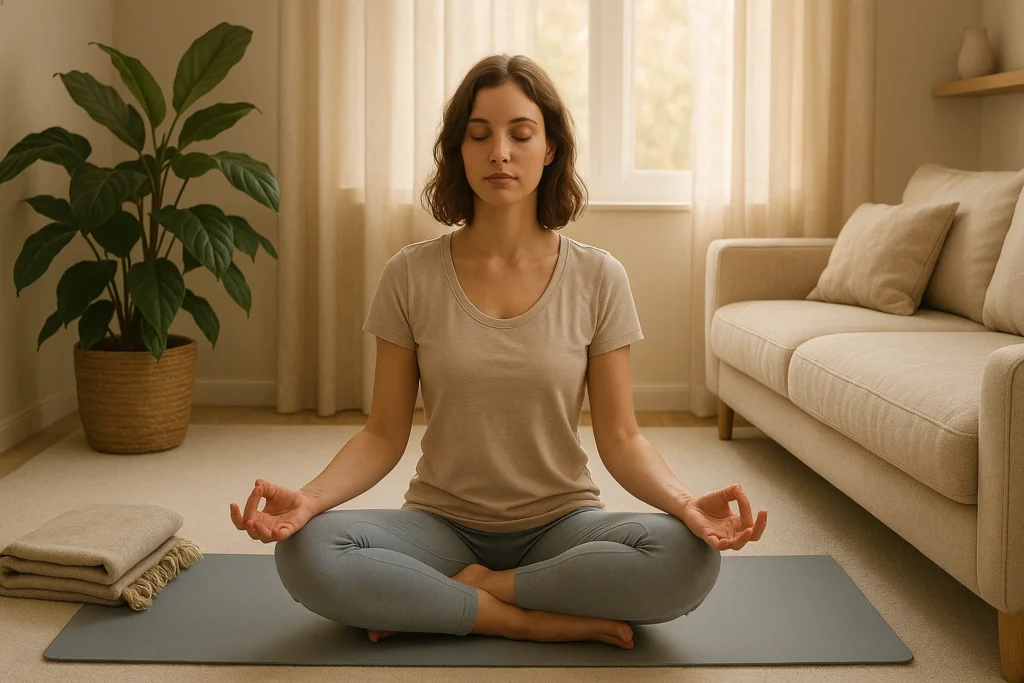
Ever notice how the right breath makes a pose feel safer and deeper? yoga anatomy kaminoff gets into the why. Whether you’re brand-new, training to teach, or already leading classes, understanding your own body changes how you move. It’s the shift from guessing to moving with intention—and from habits that risk strain to choices that support long-term well-being. Yoga Anatomy by Leslie Kaminoff and Amy Matthews turns anatomy into down-to-earth tips for breath, movement, and alignment. If you’ve wondered why a pose feels a certain way or how your breathing shapes the flow, this book is a solid first step. Want the bigger picture of yoga? Explore our yoga philosophy guide for a fuller overview.
This page contains paid/affiliate links. As an Amazon Associate, we earn from qualifying purchases, and we may earn commissions from other partners—at no extra cost to you. Learn more.
Table of Contents
Beginner’s Guide to Yoga Anatomy Kaminoff
Not sure where to start with yoga anatomy Kaminoff? This book simplifies how your body moves in yoga. For example, it shows how breath supports your spine, how joints work together, and why every body is unique. Whether you’re new to yoga or deepening your practice, understanding yoga body anatomy helps you move safely and confidently.
Check Your Sleep & Stress at Home
Curious how breathwork and routine are landing? A simple at-home Sleep + Stress test helps you measure first, then tailor your practice with confidence.
Get 15% Off: Start Your Test Partnered
Use code Max15 for 15% off sitewide.
Not medical advice; consult a healthcare professional for personal guidance.
Key Takeaways from Kaminoff’s Yoga Anatomy
| Key Takeaway | Description |
|---|---|
| Principles Over Poses | Learn universal anatomical principles to apply to any yoga pose. |
| Breath is King | Understand breath as the core driver of movement and stability. |
| Individualized Approach | Adapt poses to your unique body for safe, effective practice. |
| Visual Learning | Clear illustrations make complex anatomy easy to grasp. |
| Empowering Knowledge | Gain insights to practice safely and teach with confidence. |
Why Yoga Anatomy by Leslie Kaminoff Stands Out
Among yoga guides, Yoga Anatomy by Leslie Kaminoff stands out. It breaks down tricky anatomy ideas into practical tips you can actually use. Unlike stuffy textbooks that just list bones and muscles, Kaminoff shows you how your body moves dynamically in yoga.
“This book isn’t about memorizing muscles; it’s about feeling how your body breathes, moves, and flows.”
From there, the book gently challenges one-size-fits-all alignment cues and leans on principles you can test in your own body. Because every body is different—what works for one person might not for another. Kaminoff shows how to read your structure and adapt, which can make practice feel safer and more sustainable. Curious about alignment? See our yoga alignment principles guide. For a deeper dive into yoga’s foundations, explore Yoga Journal’s guide to yoga foundations.

Standout Features of the Kaminoff Yoga Anatomy Guide
Yoga Anatomy gives you clear, practical tools to better understand your body in motion. Here’s what makes it stand out for both teachers and students.
Clear Visuals and Illustrations
The vivid, full-color illustrations in the book make concepts pop. For instance, they show muscles working in poses like Downward-Facing Dog, with color-coded diagrams to highlight movement. Different angles make it easy to see how joints and muscles team up, turning complex ideas into something you can grasp.
Principles, Not Just Poses
Instead of memorizing pose lists, Kaminoff teaches the bigger rules—how the spine moves, how joints share the load. Learn the principles once, then carry them into any shape on the mat. You’ll feel more confident making small, safe tweaks for your body.
Breath-Centric Approach in Yoga Anatomy Kaminoff
Breath sits at the center of practice. In Kaminoff’s view, your inhale and exhale guide stability and motion—so the breath doesn’t follow the pose; the pose follows the breath.
“Breath isn’t just air moving in and out—it’s the spark that drives your movement, stability, and even your mood in yoga.”
Understanding Individual Variation in Anatomy for Yoga
Kaminoff reminds us that no two bodies are the same. By understanding skeletal and muscular differences, and how they affect anatomy for yoga practice, you can tailor poses to fit your needs, creating a practice that feels personal and respects your limits.
Learning Progress Tracker
Track your journey through yoga anatomy Kaminoff with this interactive quiz to see how well you’re grasping key concepts.
📚 Yoga Anatomy Quiz
Test your grasp of Leslie Kaminoff’s Yoga Anatomy concepts, one question at a time.
Understanding Principles vs. Poses: How well do you grasp applying universal principles to any pose?
15-Minute Book & Podcast Summaries
Keep your svādhyāya streak alive—digest key ideas on habits, mindfulness, and sleep between classes without overwhelm.
Start learning now Partnered
No discount code needed — just click and explore.
Deep Dive: Core Principles of Yoga Body Anatomy
Let’s dive into what makes Kaminoff’s approach to yoga anatomy such a game-changer, focusing on breath, spine, and muscles.
Breath as the Foundation
Kaminoff sees breath as the heartbeat of yoga movement. Take an inhale—it lifts your torso for backbends; an exhale helps you ease into forward folds. Getting this flow down lets you move with purpose, boosting both stability and depth. Want to explore breathwork further? Check out our beginner breathwork guide.
Spine and Joint Mechanics
Think of the spine as yoga’s main pathway. It flexes, extends, side-bends, and rotates—and every pose is some blend of those. Kaminoff also explains how nearby joints trade jobs: many teachers cue knees for stability while hips ask for range—general guidance rather than a strict rule. Understanding that swap helps you protect the usual trouble spots.
Muscles in Action
Muscles work in pairs and crews. Agonists create the action, antagonists control and brake it, and synergists help or steady the joint. When you cue the right group, the whole pose feels smoother.

Who Benefits from Yoga Anatomy?
If you teach, practice regularly, or are simply curious about yoga, Yoga Anatomy may be a strong fit.
Yoga Teachers and Trainees
For teachers and trainees, it’s a practical toolkit: clearer adjustments, smarter sequencing, and better decision-making—plus guidance on when to refer students to a healthcare professional.
Advanced Practitioners
Seasoned yogis can fine-tune alignment, reduce injury risk, and use Kaminoff’s lens to refine the details—taking their flow up a notch.
Dedicated Students
Even if you’re not teaching, this book helps you understand cues, stay aware of your limits, and connect deeply with your poses, both physically and mentally.
Real-World Impact: Stories of Transformation
I’ve seen these ideas work wonders in real life—here’s how Yoga Anatomy makes a difference.
Case Study 1: Tight Hips
Sarah, a teacher, used Kaminoff’s individual variation principles to help her student Mark ease tight hips, adapting Pigeon Pose with props for a safer stretch.
Case Study 2: Shoulder Pain
Maria, an advanced yogi, got rid of shoulder pain in Downward Dog by adjusting her hand and shoulder blade placement, thanks to Kaminoff’s mechanics.
Case Study 3: Back Relief
David found relief from lower back stiffness in forward folds by letting exhales guide his movement, a trick straight from Kaminoff’s breath techniques. Want more tips? See our yoga for lower back pain relief guide.
Beyond Anatomy: Enhancing Yoga Enjoyment
But Yoga Anatomy isn’t only a list of muscles. When you understand your body, poses tend to feel more natural, and that ease can invite a calm, enjoyable flow.
How Yoga Anatomy Compares
Compared to books like Ray Long’s The Key Muscles of Yoga, which zeros in on specific muscles for each pose, Kaminoff’s book focuses on breath-driven principles and individual differences. It may suit you if you prefer a flexible, principle-based way to understand your practice.
Ready to study along with the authors?
Buy Yoga Anatomy (3rd Edition)
(Paid link — we may earn a commission at no extra cost to you. See our full disclosure above.)
- Author: Leslie Kaminoff & Amy Matthews
- Edition: Third (expanded breathing & spine chapters)
- Great for teachers, trainees, and dedicated students
Integrating Kaminoff’s Insights
Here’s how to bring Yoga Anatomy into your practice:
- Practice with curiosity: Notice how breath and joints share the work in each pose.
- Listen to your body: Observe your structure without judgment.
- Let breath lead: Let inhales lift and exhales soften your movements.
- Embrace small tweaks: Props and variations help a pose fit you.
- Keep learning: Revisit chapters and apply one idea at a time.
- Share the wisdom: Discuss what you’re exploring with a teacher or friend.
The Enduring Value of Yoga Anatomy
Yoga Anatomy builds a mindful connection with your body. By moving past rigid rules, it encourages you to listen to your body and adapt with ease, so your practice stays safe, sustainable, and—most importantly—enjoyable.
Glossary of Key Terms
Diaphragmatic Breathing: Breathing that engages the diaphragm to stabilize the spine.
Bandhas: Internal energy locks that enhance breath and stability.
Agonist: The primary muscle driving a movement.
Antagonist: The muscle opposing the agonist, aiding balance.
Synergist: A helper muscle that assists the main mover or keeps a joint steady.
Frequently Asked Questions
Conclusion: Why the Yoga Anatomy Book Still Matters
The yoga anatomy book by Leslie Kaminoff and Amy Matthews is more than just a book — it’s like having a personal mentor guiding you toward a safer, more mindful yoga journey. Take what you learn, roll out your mat, and notice how each breath and movement feels more natural, safe, and connected. Get the book on Amazon (paid link).


